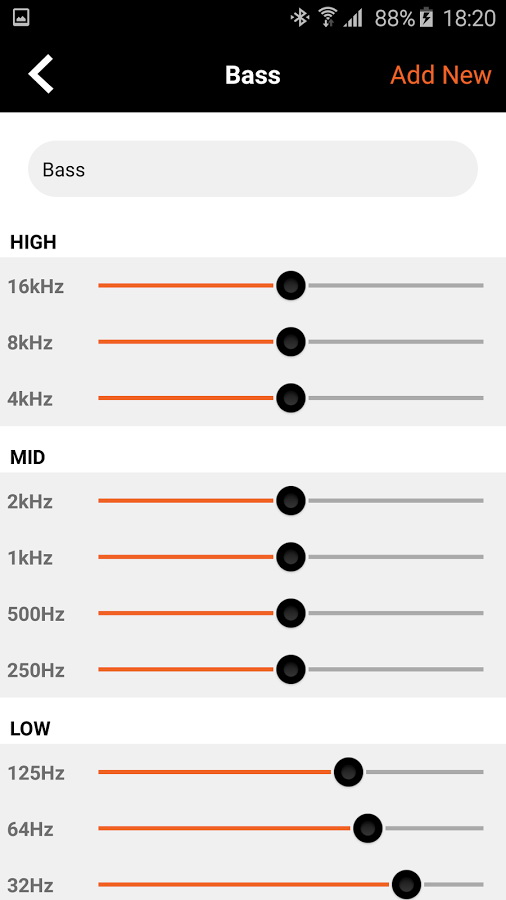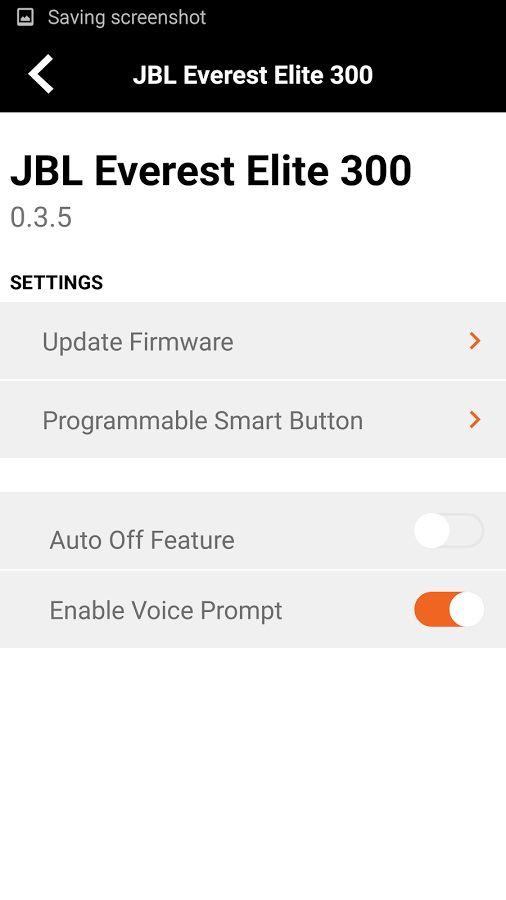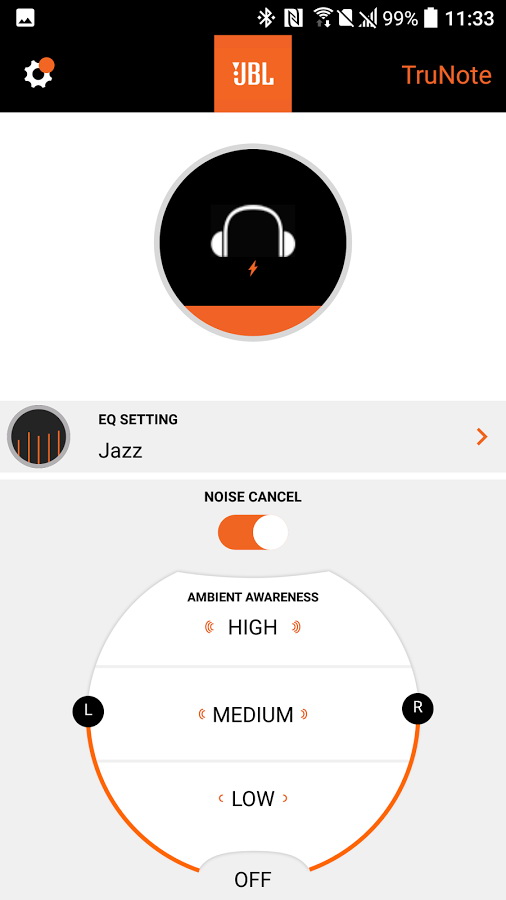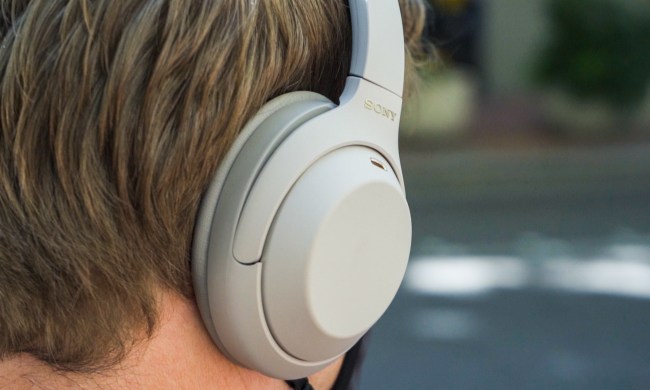- Clear, dynamic sound
- Simple, beautiful design
- App-based audio customization
- Easy Bluetooth connectivity
- Noise cancelling isn’t on par with some competitors
- Headband can get uncomfortable over time
JBL’s feature-packed Everest Elite 700, the latest iteration of the company’s popular Everest line, are perhaps the perfect set of cans to help the brand celebrate 70 years in business. Packed with features like wireless Bluetooth connection, noise-cancelling, and an extremely customizable sound signature, they are a beautiful and well-designed set of over-ears that aptly showcase the company’s many long-term research and development projects.
Though the Everest Elite 700 aren’t as good at noise cancelling as some purpose-built competitors, (namely Bose) they more than makes up for that in overall functionality and sound quality. These headphones are a utility knife of audio whose individual tools might not work as well as standalone competitors but, when packaged together, provide an extremely formidable and useable end product for great performance in all situations.
Out of the Box
The Everest Elite 700 arrive in a shiny silver box with JBL-orange accents. An outer shell slides off to reveal a black box beneath with an image of ravers dancing, below the logo and model number. Opening the lid reveals a dark compartment with orange accents from which the slick silver cans seem to leap out at you, begging to be picked up.
Putting the cans aside, accessories inside the box include a grey 2.5mm-3.5 mm headphone cable with a single-button mic piece, a grey microUSB charging cable, and user guides for both the headphones and the My JBL Headphones App designed to work with the Everest lineup. Also in the box is a tweed-patterned soft case with an orange zipper for travel. It’s not a hard shell, but there’s plenty of padding on the top and bottom, making travel worry free when you throw them in a backpack or suitcase.
Features and Design
Even in our flashy, special-edition silver colorway, the Everest Elite 700 have a simple elegance for a pair of cans carved from plastic. The entire setup — save the black leather ear cups — looks like a uniform piece, with a trio of JBL logos painted on the left and right backsides and headband. Left and right stereo indicators are embossed on black filters inside the ear cups themselves for easy orientation.
Even in special edition silver, the Everest Elite 700 look simple and elegant.
The leather-clad ear pads are tapered to be slightly larger at the bottom than the top, allowing for an extremely comfortable seal that also provides a solid amount of passive noise isolation. The ear cups are soft and comfortable, but the upper band only gets a small amount of rubberized padding, which can make them wear on the head after long listening sessions.
The size of the headphones can be easily adjusted via sliding metal bands on each side, which feel extremely solid and hold their positions admirably. Even when we switched the Everest Elite 700s back and forth between different users, over winter hats, etc., they adjusted easily and held their form.
As alluded to above, JBL’s top-end offering presents a veritable Swiss Army knife of features. That includes adjustable active noise cancellation (ANC), customizable sound (via the My Headphones App), Bluetooth 4.0 connection, standard 3.5mm wired playback, and 15 hours of battery life.
The headphones’ various functions are controlled via well-hidden, yet accessible buttons behind the left and right ear cups. Power and noise cancellation controls are on the right side alongside the charging and audio ports, and volume and multi-function controls (play, pause, and song skip) are located on the left.
JBL’s ANC comes with various levels of “ambient awareness,” allowing you to choose the amount of environmental audio to bring into the mix. This allows you to hear announcements on the bus or in an airport may enjoy this function, as traffic for bikers and runners, though we stuck to the basic cancellation mode throughout most of our evaluation. That’s because the noise cancellation itself was adequate as an added feature, but did allow us to hear more of the outside world than purpose-built noise cancellers like the Bose Quiet Comfort 35 and Sony MDR-1000x.
The App
The My Headphones app is perhaps the coolest feature, free and easy to install via the iOS and Google Play stores. The app shows what percentage of the headphones’ battery is left, allows you to choose the level of noise cancellation you want, and — most importantly — allows you to adjust the sound profile. You can pick between jazz, vocal, and bass equalization settings, as well as create your own custom EQ to suit a favorite genre or particular mood.
The Everest Elite 700 also offer something the company calls TruNote tuning, which, when selected in the app, plays a tone and uses the built-in microphones to calibrate the headphones to the shape of your head, though results there may vary (more on that below).
Though we didn’t time the battery life of the headphones, it did seem to hover around two full days of listening, approximately the 15 hours promised by the company. To save juice, the Everest Elite 700 shut off after 10 minutes of inactivity, which is a nice feature for those who routinely forget to hit the off button.
Setup
For wireless setup, simply press and hold the power button, and wait for a very pleasant voice to tell you that pairing mode has been enabled. Then all you have to do is pair them via your phone, laptop, tablet, or other Bluetooth-enabled device, prompting a “connected” message. You can also plug them in with noise cancelling on or off.
Audio Performance
We listened to the JBL Everest Elite 700 in every way mentioned above — wired (powered and unpowered) and wireless — at home, on public transit, and in our office, and they performed very well in all situations.
Even without any of the fancy app-based calibration or equalization enabled, the Everest Elite offer a truly warm and revealing soundstage. Somewhat muddy live-recorded tracks like those on Ryan Adams’ Spotify Sessions come through with every sonic layer sounding distinct. The punchy low end makes drums and bass tones vibrant, but there is enough shimmer up top to give guitars a home.
When all the stops are pulled out in JBL’s app, we couldn’t find a style of music that the JBL Everest Elite 700 wasn’t capable of tackling.
When put in jazz mode, Brian Blade’s Perceptual was delivered with a pillowy but subtle adjustment to the sound, something which seemed to bring guitar and horn soloists into focus right in the middle of the surrounding instruments. In bass mode, the fat drums on J Dilla’s Detroit Madness instrumental became punchier, but not overpoweringly rumbly, as is common with many hip-hop purposed over-ears.
Frankly, we couldn’t tell much of a difference between the ear-mapped TruNote sound signature and the sans-TruNote one, but that may be because our ears were already almost perfectly in the center of the earphones, due to the well-designed taper of the ear cups.
Our Take
Those looking for a solid set of Bluetooth headphones with good looks and highly adjustable listening options will find all that and more in JBL’s Everest Elite 700.
Is there a better alternative?
In terms of app-controlled wireless over-ears, perhaps the highest profile (and most feature-packed) option are Parrot’s Zik 3, which offer even more bells and whistles than the Elite 700, but also cost $100 more. The Bose Quiet Comfort 35 or Sony MDR-1000x, both of which offer industry-leading noise cancelling and comparable — albeit not as adjustable — sound performance.
How long will it last?
The JBL Everest Elite 700 are well built, and come with a well-padded soft case. If treated with care, they should last for years of use.
Should you buy it?
Yes. The JBL Everest Elite 700 are an extremely pretty and solid-sounding pair of headphones with virtually all the functionality you could ever need.















